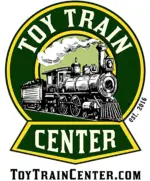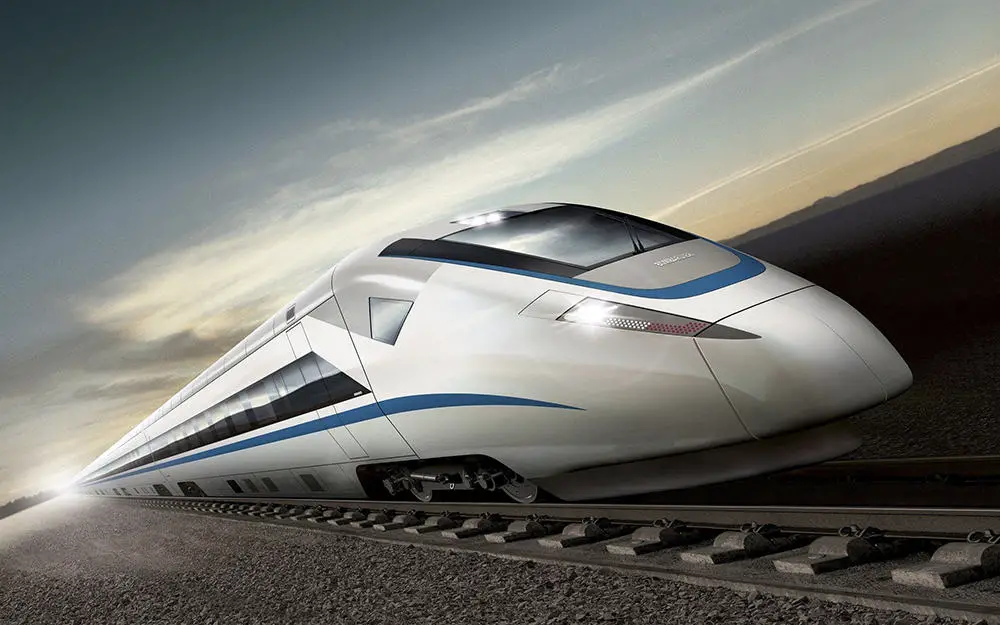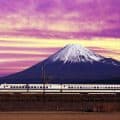The word train was originally coined from the old French word trahiner, which was also derived from the Latin word trahere meaning “to pull” or “to draw”. A train is generally used for the transport of cargo and passengers.
Here are 25 amazing facts about modern trains from ghost trains to fastest trains to imaginary trains:

- Paper Trains
Some time ago, some train wheels used to be made of paper so as to produce a less noisy ride, but they had to be banned eventually for safety reasons.
- Ghost Trains
Many ‘Ghost Trains’ transverse the British Rail Network. These trains are often unadvertised, rarely seen, and even if they are it is at obscure times, and often follow bizarre routes. This is done by the British railway network system purely to keep lines officially open and also to prevent use by passengers. Ghost train hunters earnestly search for these anonymous trains around the country.
- Train Locomotives
The locomotive of a train is powered by individual motors in a self-propelled unit. It consists of a series of connected motors that generally run along tracks called railways. They can be powered by a variety of energies including electricity, steam and diesel. The most common types of energies used to power trains are electricity and diesel but steam was most common during the early stages of development.
- Trains and Suicides
In Japan, if a person commits suicide by jumping in front of an oncoming train, the train company has the legal right to sue his/her family for clean up fees, loss of income and negative publicity.
- Heaviest Trains
The world’s longest and heaviest train ever recorded was operated on June 21, 2001, between Newman and Port Headland in Western Australia. The train moved 170 miles (274 km) with 682 loaded iron ore cars. The train weighed 99,734 tons and was 4.57 miles (7.35 km) in length. This still holds a world record to date.
- Fastest Trains
The very first high-speed trains were made in Japan. These electric “bullet trains” ran between Tokyo and Osaka in 1964. Japan’s new magnetic-levitation bullet train is now the fastest in the world. Japan Railways’ latest magnetic levitation bullet train just broke its own world record as the fastest train in the world. The bullet train travelled at 603 kph (374 mph), beating its previous top speed of 590 kph (366 mph) in April 22, 2015.
Here’s a look inside a Japanese Express Train!
Video Credit: travel more. live life. – Click Here to watch directly on YouTube
- Trains and Teenagers
Another hilarious but amazing fact about modern trains is that in 1993, a 16 year-old teenager from Brooklyn pretended to be a subway conductor and drove a train for over three hours, safely picking up and dropping off passengers at regular station stops along the train route, before getting caught. He was not put in jail for this act though.
- Swedish Trains
Did you know that there is a train station in Sweden that uses people’s body heat to warm adjacent buildings? Well, now you do!
- Trains and Railways
The main reason why trains always manage to stay on their tracks is because of the weight and angles of the wheels, but not due to the lip or flange on the inside of the wheel.
- Trains and Hitler
After WW1, the French stored the railway cars that Germany surrendered in a museum. During WW2 when France was preparing to surrender, Hitler ordered the walls of the museum to be torn down and the railway cars returned to the exact spot of the 1918 armistice just to humiliate the French.
- Passenger Trains
Passenger trains essentially include all passenger-carrying vehicles, and that can sometimes be very long and fast. Some of these trains have attained speeds of over 500 km/h (310 mph), using innovative mag-lev technology that has been constantly researched for many years.
- Ore Trains
Swedish ore trains that travel down the coast are capable of generating five times the amount of electricity they use, which powers nearby towns and the return trip of other trains.
- Trains and Tragedies
In 1886, three people were killed and many more were injured as a result of a publicity stunt of a Texas train company. They had arranged for the public to watch two of their trains crash into one another at full speed because they wanted to put on a show.
In 1907, an entire town called Nacozari, Sonara was saved by a Mexican railroad brakeman named Jesus Garcia. He single-handedly drove a damaged and burning train containing explosives six kilometers away from the town before it finally detonated, killing only him.
- Punctual Trains
Trains in Japan are so punctual that any delay over 5 to 10 minutes usually incurs an apology and a “delay certificate” for passengers on their way to work. Sometimes when these trains are delayed for an hour or more, they can even make the news.
- Hogwarts Train Express
The Hogwarts Express train used in the popular Harry Potter series is an actual train that currently runs in Scotland. The train navigates through gorgeous settings, including highland valleys and lochs.
- Trains and Movies
The fight scene that was performed on top of the train in the Bond movie Skyfall was actually filmed on top of a real moving train. Another interesting fact is that Daniel Craig did not use a stunt double for that scene.
- Longest Train Travel
The longest train travel ever recorded in the world covered a distance of 17,000 kilometers. This journey was between Portugal and Vietnam.
- Trains and Football
In 1896, Auburn ROTC cadets accidentally greased the skids of a railway track before a football game. The train did not stop and ended up sliding halfway to the next town. This stroke of bad luck forced them to walk five miles to the game, possibly contributing to their 45-0 loss that day.
- Trains and World Wars
The engineer who designed the Japanese Kamikaze dive-bombing planes of WWII felt bad about his role in the war. Towards the end of the war, he decided to use his expertise to design the body of the Shinkansen (Bullet Train). His design was a success. Bullet trains have successfully operated with zero accident-caused fatalities.
- Bamboo Trains
In some parts of Cambodia people have made their own trains out of bamboo after regular services stopped running.
- Trains and Physics
The London Underground essentially has its own implementation of the KERS (Kinetic Energy Recovery System), which is quite different from other countries where the platforms of most train stations are actually uphill from the surrounding track, such that the kinetic energy is converted to gravitational potential energy, and recovered when the train leaves the station.
- Trains and Music
Most train horns are basically based on musical chords. The common passenger trains mostly found in the U.S. are usually based on major 6th chords, which are not as threatening as most large cargo freight trains, which are based on the more unpleasant, frightening, diminished 7th chords.
- Luxury Trains
Luxury trains are the best way to travel if anyone wants to see the world’s most beautiful places. They deliver the most exciting, unforgettable experience across the world’s exotic sites. Anyone willing to spend a substantial amount of money to experience the luxury of kings and queen should try luxury trains like the Orient Express.
- Freight Trains
On average, a freight train can move one ton of material approximately 500 miles using one gallon of diesel fuel. Also the average length of a freight train in the US is 2,000 meters/1.25 miles long.
- Trains Can Bark
Trains in Japan have been designed to bark like a dog and snort like deer to scare deer and other animals away from the rail tracks so as to reduce the number of animal deaths on the railway line.
Trains are one of the major means of transportation in most modern societies. They are used for transporting large cargos and passengers from one location to another. They are relatively cheap and comfortable. Some railways even run from one country to another making the transportation process much easier.


